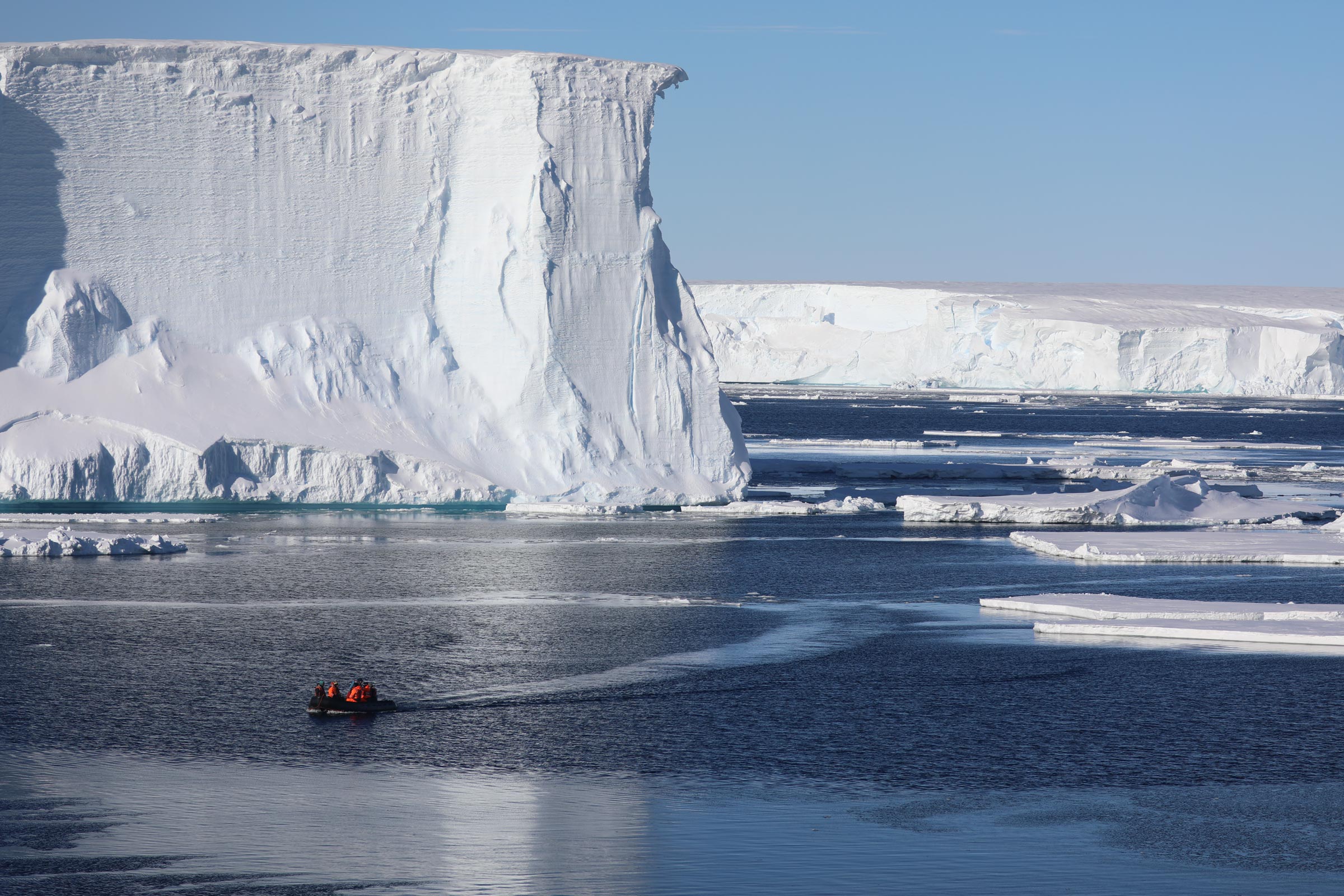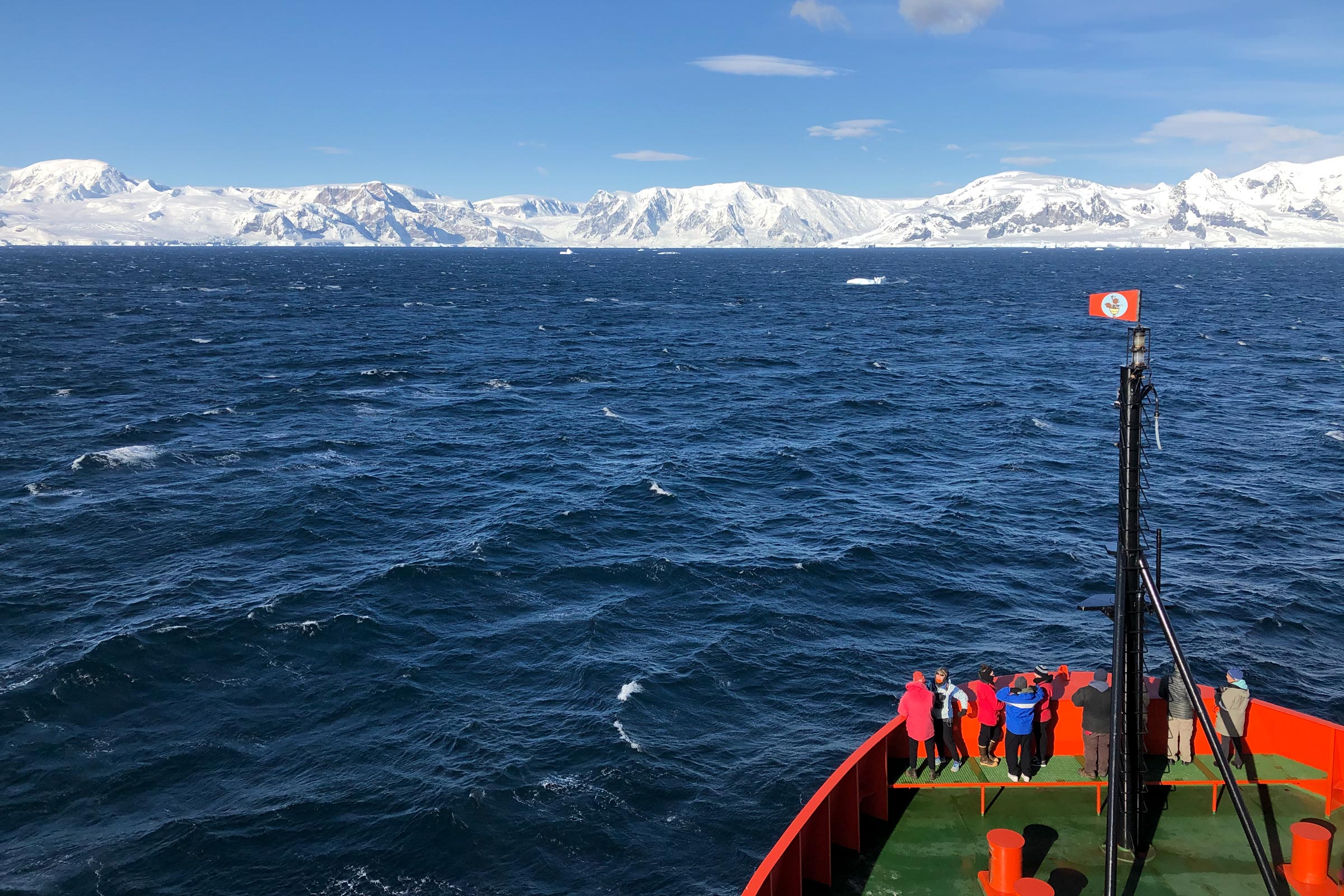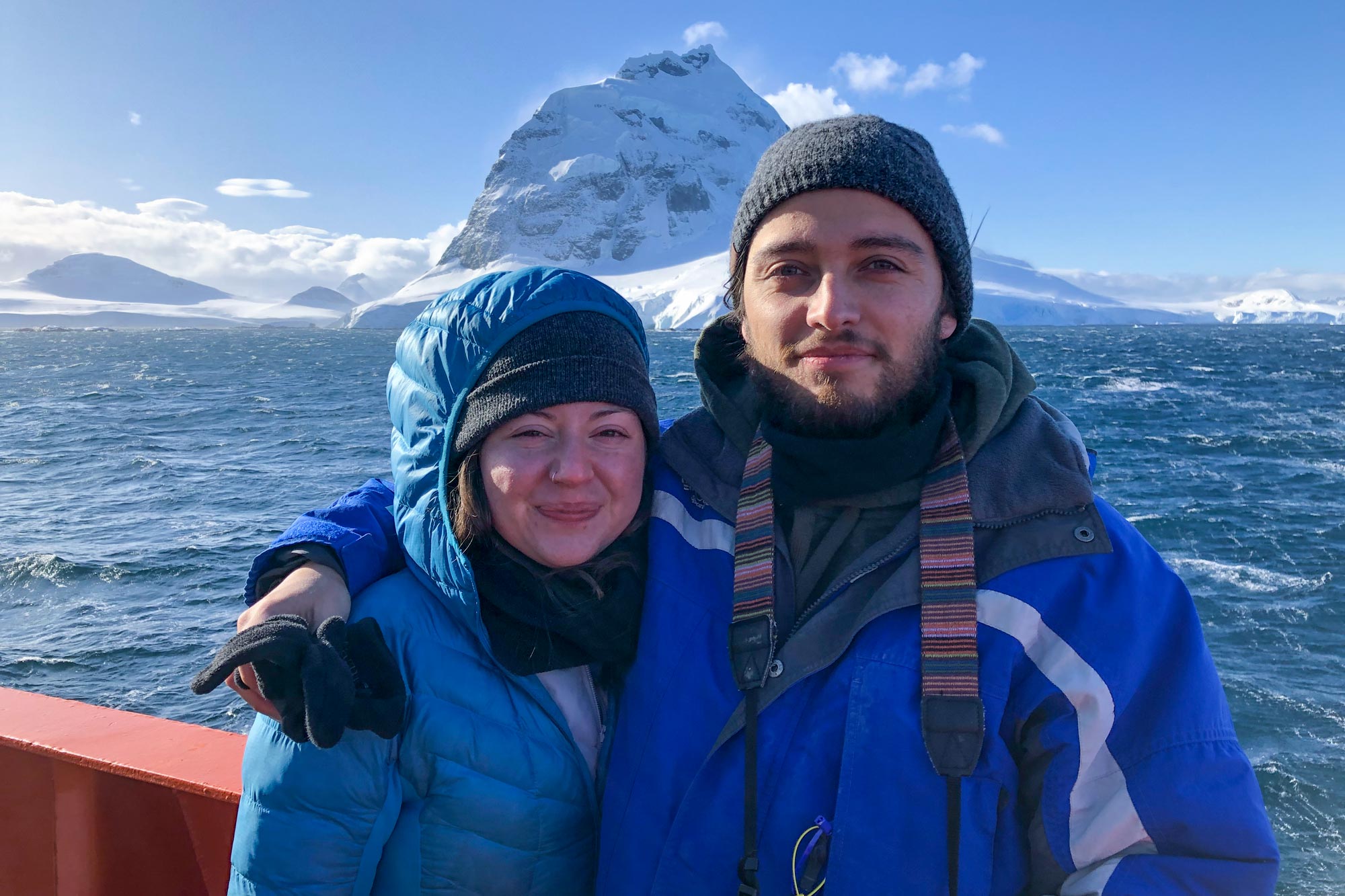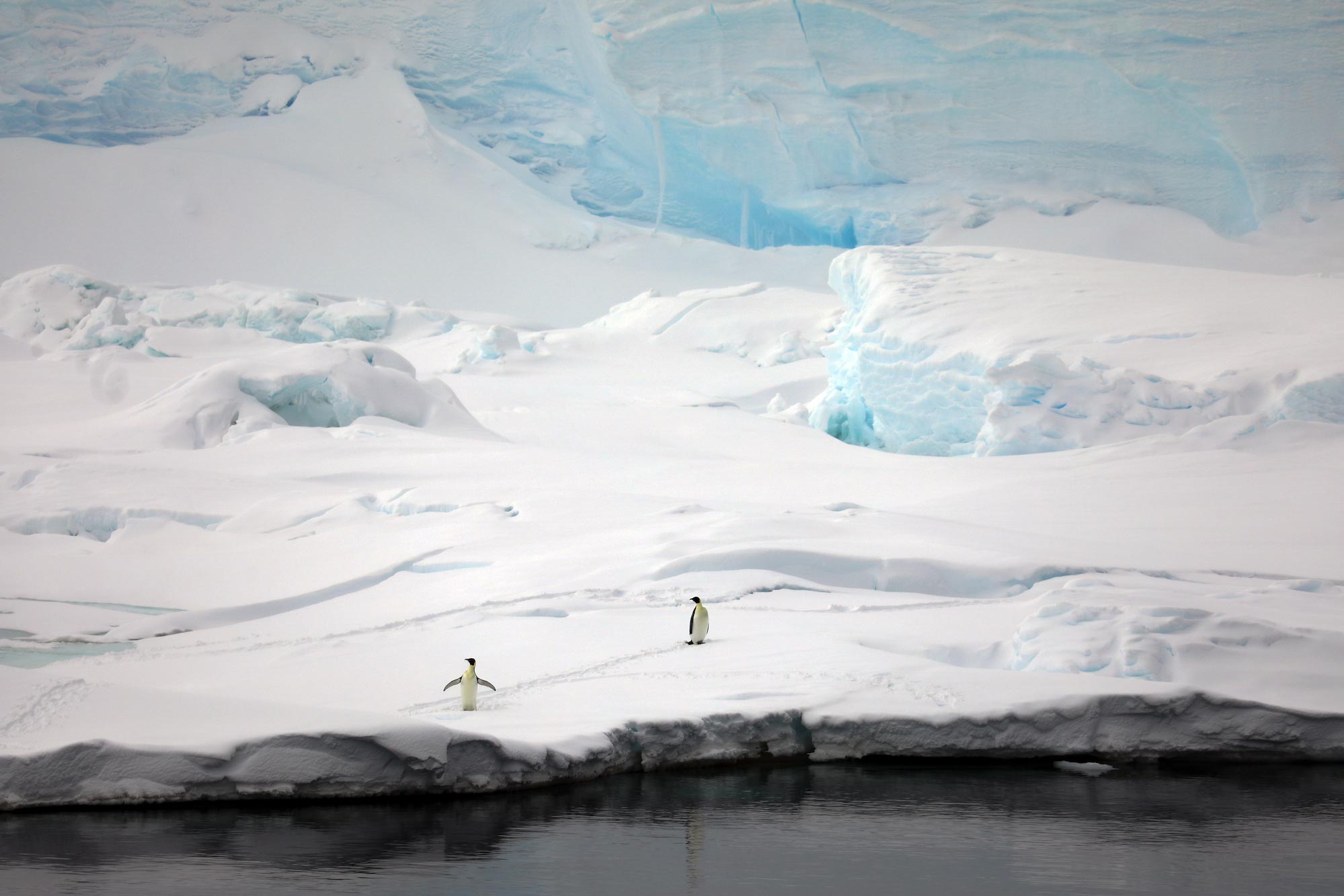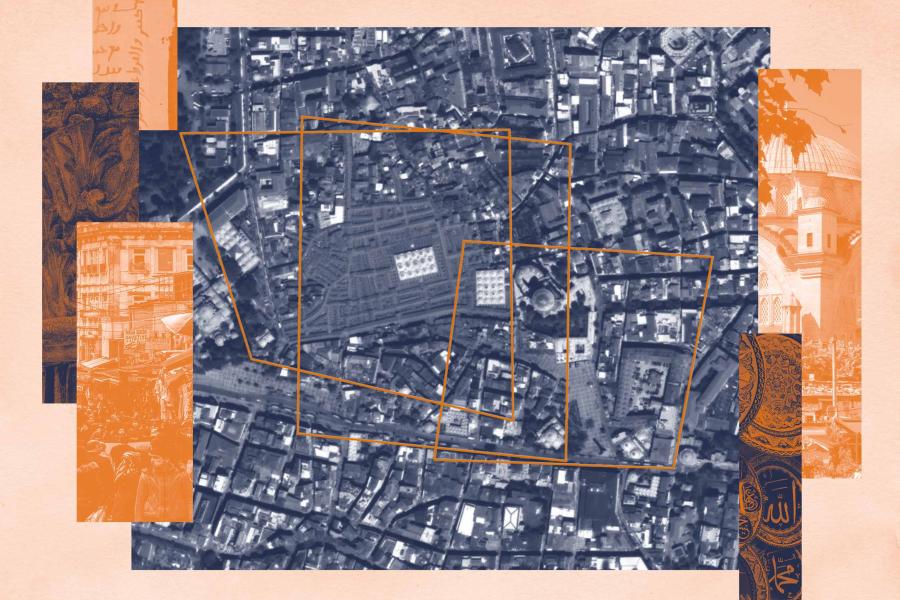The five-year research project, which wrapped up this year, documented how Thwaites detached from a supporting seabed structure sometime in the last 200 years, rocking and receding with the tides.
The researchers think that the 160 parallel ridges that were formed from the leading edge of the glacier were cast over a period of about six months. At that rate, the retreat would be equivalent to 1.3 miles per year – a retreat twice as fast as any satellites showed in the eight years preceding the research.
“Our results suggest that pulses of very rapid retreat have occurred at Thwaites Glacier in the last two centuries, and possibly as recently as the mid-20th century,” said marine geophysicist Alastair Graham of the University of South Florida’s College of Marine Science, the study’s lead author.
Witnessing the Glacier
Simkins’ lab at UVA analyzes data that comes back from the ship. That includes not just numerical data of the seafloor from ship-based and AUV surveys, but also sediment samples dug out from the once ice-covered seafloor.
Simkins has made several trips to Antarctica. The scale of the ice sheet is breathtaking, she said, and hard to capture in a photograph that doesn’t contain manmade landmarks for perspective.
For her, though, the witnessing doesn’t evoke thoughts of doomsday, but curiosity and hope.
“I think of all of the unanswered questions and all the ways we can improve projections of the ice sheet moving into the future,” she said.
In recent years, Simkins’ graduate students are more often the ones aboard the ice-cutting research vessel. Doctoral candidates Allison Lepp, who is investigating the meltwater history of Thwaites, and Santiago Munevar Garcia, who studies the sensitivity of ice streams in subglacial topography, made the trek in 2020.
The trip involves prolonged isolation in the cold, which is offset by the warmth of scientific camaraderie.
“The experience was exhausting, but invigorating at the same time,” said Lepp, who studies sediment cores. “We worked 12-hour days, seven days a week for two months. Each day was different, and the interdisciplinary expertise on board – including oceanographers, marine mammal biologists and marine geophysicists – created a unique, floating classroom with a variety of diverse perspectives to learn from.”
She said one of the biggest lessons from the experience was the importance of being flexible.
“At any moment we had to be ready to adjust to weather or sea ice conditions, equipment malfunctions, or new and unexpected findings,” she said.
Forewarned Is Forearmed
At UVA, Simkins teaches general courses such as Fundamentals of Geology, as well as more specific ones, such as Polar Environments.
She said Antarctica is a reminder that there are places on Earth relatively untouched by humans, yet which affect us all, and that’s something she wants students in her classroom to think about.
“We’re physically separated from places like Antarctica, but we are connected in terms of changes in sea level and climate,” she said.
For her students inheriting the planet – and for lawmakers and government officials making key decisions right now – she would stress that to be forewarned is to be forearmed.
As the U.S. government plans for a new research vessel that will replace the two existing ones, which have reached the ends of their lifespans, she hopes that AUVs and other technology not currently planned for inclusion on the replacement ship will be given renewed consideration.
“How can we better outfit our ships to do this new and exciting science?” she asked rhetorically. “There’s some activism that has to take place, and that’s on the part of the scientists who use those technologies and infrastructure.”
